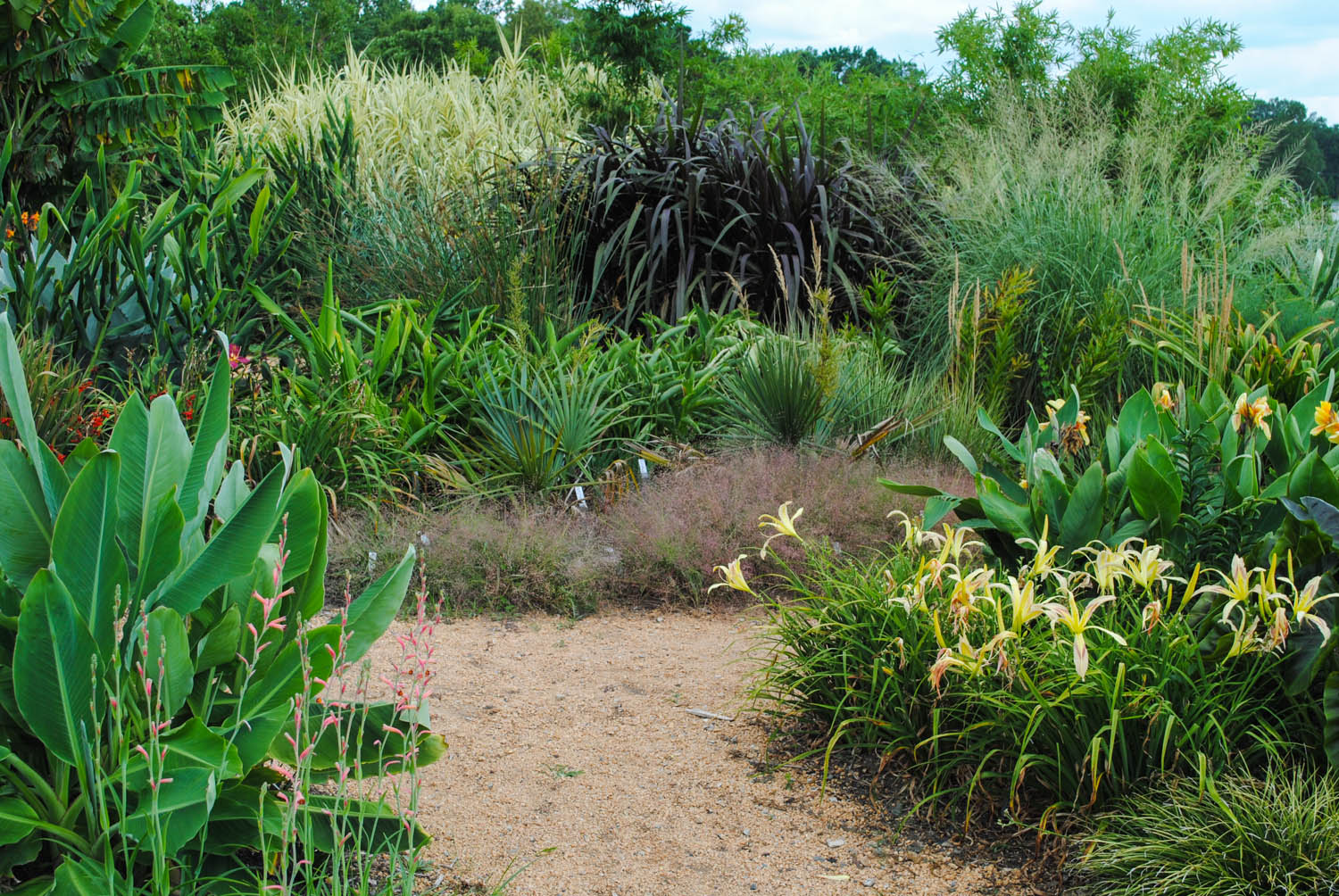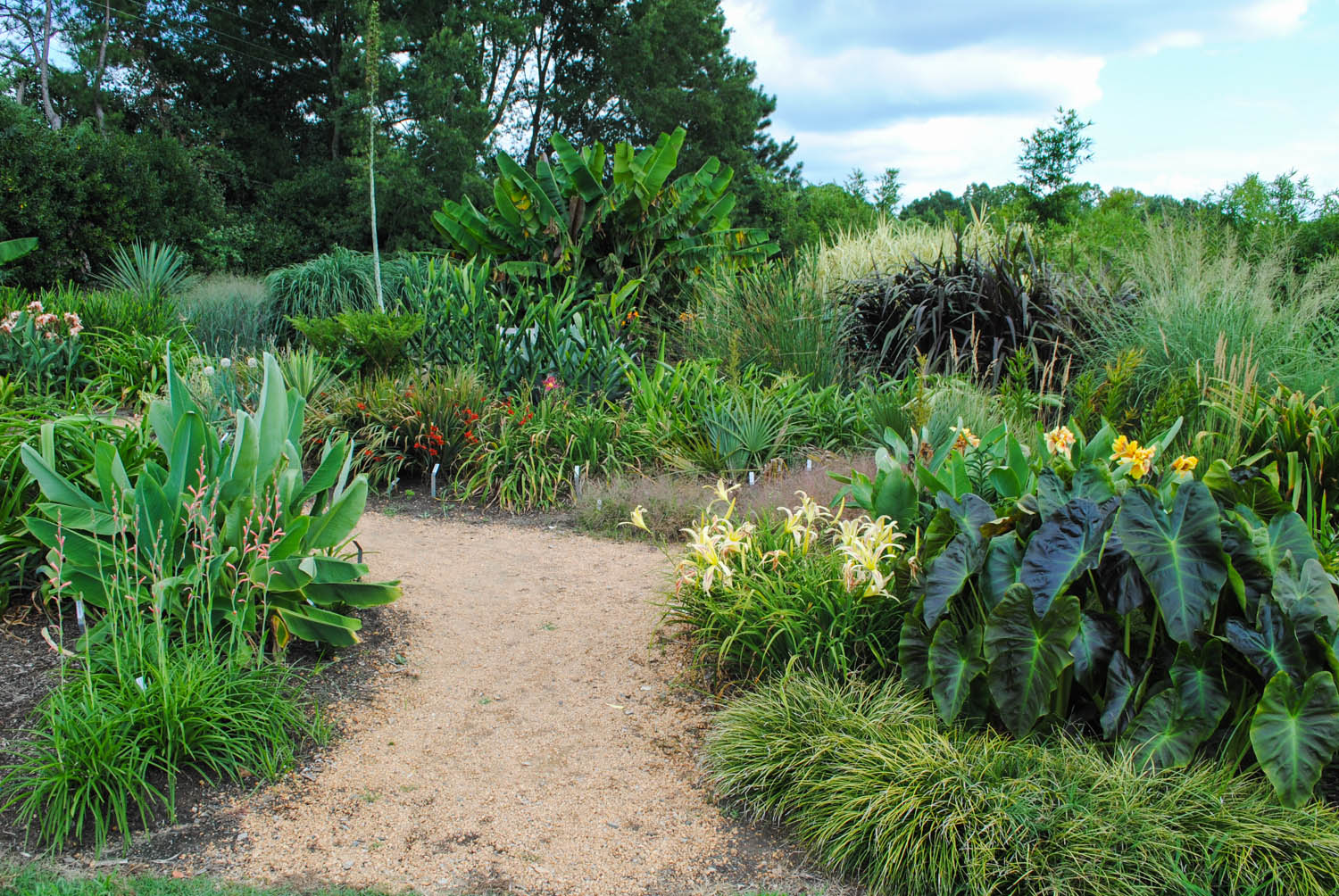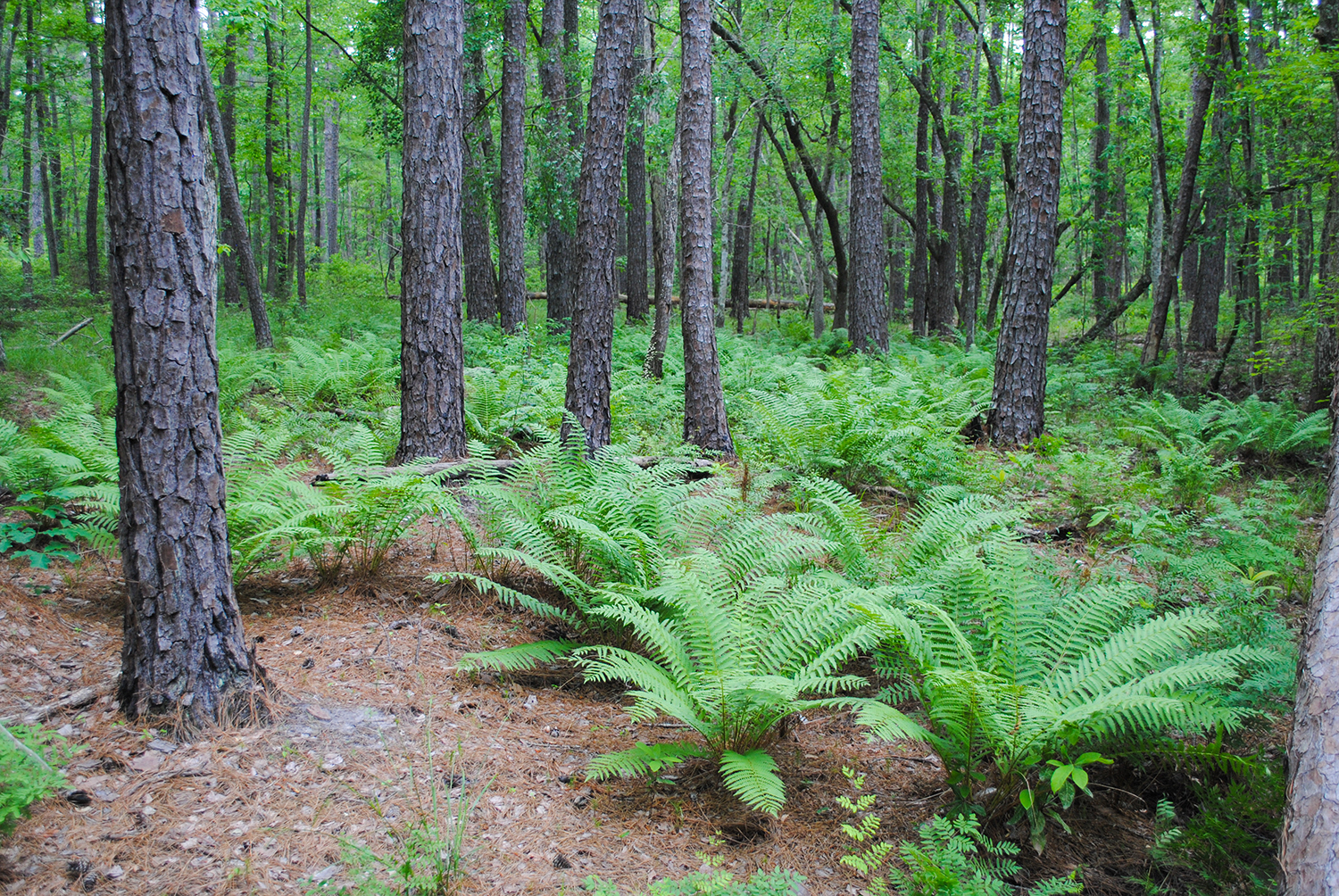Dr. Jared reflects on his visit to Northwind Perennial Farm and the wisdom Roy Diblik shared about perennial plantings.
Read MorePPA 2019: Intrinsic Perennial Gardens
As part of the Perennial Plant Association’s 2019 symposium, Dr. Jared visits Intrinsic Perennial Gardens.
Read MoreReminiscing on Joshua Tree
Pack your sunscreen! Dr. Jared reflects on a late July trip to Joshua Tree National Park.
Read MoreI’ve Been Hanging Pots Around
Dr. Jared installs pot hangers at his house for some terra cotta flair.
Read MoreCrazy for Crevices at Juniper Level Botanic Garden
Dr. Jared visited the incredible crevice garden at Juniper Level Botanic Garden.
Read MoreLately 'Antebellum'
I’ve struggled in the past with growing bell peppers that would perform well and produce decent sized fruit. This year, I’ve had incredible success with ‘Antebellum’.
‘Antebellum’ bell pepper
I saw them promoted as a good variety for the southeast in the Twilley seed catalog back in the winter and decided to give them a try. We returned home to find the plants loaded with fruit. Just this week I picked 22 bells off 18 plants, and there are more coming. The fruit are supermarket sized and have that nice bell pepper crunch. From what I understand, this variety was developed for green peppers; therefore, don’t wait for them to blush. I haven’t seen any issues with blossom end rot or pests yet, but of course, those conditions can vary year to year.
There’s still more ‘Antebellum’ peppers to come!
Now to find new recipes for stuffed bell peppers, and delicious ones that we can freeze to boot!
Monocot Garden at the JC Raulston Arboretum
The monocot garden at the JC Raulston Arboretum looked spectacular during my recent visit to Raleigh. It was in its youth when I left grad school in late 2013, and I haven’t seen it mature and at the height of summer since. The garden focuses on the evolutionary branch of plants that share a few characteristics, most notably the one (mono-) seed leaf (-cotyledon) on the seedling that gives rise to the name monocotyledon or monocot for short.
The texture of the garden was very palatable and created a vibrant energy, perhaps because of the tropical feel. The more I thought about it, monocots have some plants with the largest foliage (think bananas, palms, and agaves) and the thinnest leaves (think grasses, sedges, and rushes) for our gardens. Thus, by just pairing plants based on their lineage can create grand textural differences.
The monocot garden at the JC Raulston Arboretum was rich with texture and color in mid-July.
As a quick texture check, I use a trick I learned in one of Tracy Disabato-Aust lectures years ago, and I now teach to my students. Make a photo black and white and see if it still looks engaging with differences between bold and soft or coarse and airy. With the color removed, you notice aspects that weren’t there a minute ago.
Tim Alderton, the research technician at the JC Raulston Arboretum, caught up with me right as I was wrapping up my walk through the beds, and he commented that because this garden way back in the corner of the arboretum, many visitors don’t see it. But, I did, and I encourage you to seek it out the next time you’re there, too. Or, just check out the photos below if it’s too far!
Polianthes x bundrantii. I’m such a sucker for Polianthes, and I forget there’s incredible color diversity in this genus.
Canna ‘Thai One On’ looking pretty in pink.
I <3 Eragrostis, as you should since the name translates as love grass. I’ve waxed on about it before. This form was a bit shorter than the wild ones I’ve collected.
Agave ovatifolia ‘Frosty Blue’ has such bold texture for the landscape.
One last look on this great garden.
The Clouds of Pycnanthemum
“Is this thyme?!?”, I remember my teenage mind questioning at the sight of foliage that resembled the herb. It was March, and I was rummaging through the fencerows near our house looking for wildflowers on a cloudy day that couldn’t decide if it was winter or spring. Per usual, nothing much was to be seen since I lived in the avoidance zone, but my blitheful, naive self still held out hope I might find something in the leaf litter.
And, here it was. I knew enough about herbs to cue in on the small, elongated leaves stooping down. The foliage looked a bit more pointed than the mother of thyme clump I had back home, but I crushed some, and it released a spicy menthol smell supporting my teenage hypothesis. “Wow, I’ve discovered thyme from some old homeplace,” I said to the forest around me.
Looking back on the whole experience now, I chuckle. I didn’t know about Occam’s razor then. Nor, did I pause to critique my thinking with questions like how has thyme survived in this underbrush, or how has it not spread out and taken over creation?
No, back then I knew thyme wasn’t native to the US; therefore, I assumed someone planted it here. It still had its low winter foliage just like the herb in my garden.
So, I transplanted it home and nurtured it. And, then it started to grow. And grow and grow and grow until it was over two feet tall. This plant was not thyme! I went through a wildflower book I had and found a match in the Lamiaceae section—Pycnanthemum tenuifolium.
Pycnanthemum tenuifolium flowering en masse.
Narrow-leaf mountain mint is currently blooming in my garden, and seeing it flourish was a fun reminder that I make mistakes and learn from them. Sometimes when we are wrong, it turns out better than we could have imagined! Some fifteen years ago in my teenage years I didn’t realize what I had discovered—one of the best native perennials for pollinators and other insects.
I’ll go ahead and address the white elephant (or, should I say white-flowering herb!) in the room. Yes, as a “mint” it can spread some, but I’ve never had the issues with it that I’ve had with other Pycnanthemum or Mentha species. I see having more of it as a good thing. Even with its vigor, I lost the clump I found along the roadside. But, a few years ago, I began to hunt for plants for creating floras. I knew where Pycnanthemum was; therefore, I decided to saunter back along the same fence row in search of it. After a few hours, I found one inflorescence. I collected a piece from that Tennessee plant and some seed, and this germplasm became the basis for our plants that we use on campus. Years later, I would find local Texas ecotypes on the road. Both are blooming now in my garden and offer so much.
A haze of Pycnanthemum tenuifolium flowers over a perennial planting at my house.
The fine-textured foliage emerges in tight columns rising upward. In bud the plant makes me think of the constellation Crux, or the southern cross, for the haphazard dots that attempt to form perpendicular lines. After flowering I enjoy seeing the seedheads that persist well into winter.
X marks the spot on Pycnanthemum tenuifolium. Since the inflorescences are cymes, that character likely generates this interesting floral architecture.
But, the flowers are the pinnacle attribute of this plant. The blooms remind me of stratus. Instead of countless moisture particles composing a flat, gray-white cloud that blankets the earth, here hundreds of mithril-colored flowers form sheets that hover over the foliage. These dense flowers are the origin of the name Pycnanthemum (pycn- means dense, and -anthemum refers to the flowers).
And, the insects that flock to this all-you-can-eat-buffet is astounding—bees, wasps, flies, butterflies, and more that I’m missing. Research has shown Pycnanthemum tenuifolium to be a great niche for beneficial insects from providing resources for native bees to creating habitat for predators and parasitoids. I’ve observed that the plant buzzes most with activity in the middle of the day. I have plants near each other to accentuate their seasonality, and for the pollinators it makes cloud hopping even easier.
A zebra swallowtail waddling through the flowers on Pycnanthemum tenuifolium. Yes, I know you can’t see motion in this still picture, but trust me. It waddled.
A giant swallowtail probed Pycnanthemum tenuifolium flowers.
The other day I took advantage of an overcast sky to take photos of my narrow-leaf mountain mint. I smiled at the similarity of seeing the dark insects dart amongst the silvery-white flowers and how they resembled the shadows of birds circling above me in a broken, gray altostratus sky. Both looking for food and both trying to live. This national pollinator week, I recommend planting this perennial in abundance in the garden so that you, too, can have a richer life and enjoy the clouds of Pycnanthemum and all the life that comes with it.
Delphinium carolinianum, Rock Candy for the Garden
Delphinium carolinianum (Carolina larkspur) is flowering in my garden. Since seeing it in Texas, it has scurried to the top of my list of favorite wildflowers. The native stands out with unique form and color—lines of electric blue that pierce the hurly-burly of the prairie. To me it looks like rock candy. You know, the kind that you used to eat as a kid where sugar crystals surrounded a wooden stick? I ate it up then, and I’m eating this flower up, now. Currently, the colors I have in bloom are the prominent rich blueberry and fewer of the light raspberry and soft grape.
Delphinium carolinianum flowers are such a stark yet cheerful blue to see against the greens and golds typically seen in grasslands.
It wasn’t on the property when we arrived. I’ve been collecting seed from local populations, and it’s thrilling to watch plants I started from seed erupt into bloom. As the rachis elongates, it slightly sinews from node to node, each bend a place for an immature flower. As the buds develop, the long nectary starts resembling a horn, and upon unfurling I see the spur becoming a beak of a Belted Kingfisher; the flared petals to the sides are the wings and the two pointing down the tail.
It has taken two years to get the plants from seed to flower. I made the mistake of sowing the seed my first fall here before I learned how the winter shadows moved in our new garden. The spot received little sun. The seedlings struggled, and I thought all was lost when they vanished last spring. Imagine my delight when I found the little dissected leaves breaking ground last fall!
Before the cold set in, I relocated the plants to sunnier spots. Now, I and the fauna of my garden have been rewarded this year with blooms. I’ve watched the inflorescences sway from probing by Ruby-throated Hummingbirds by day and hummingbird moths by night.
But, this larkspur does have an ephemeral nature. Soon, the rock candy will dissolve with the heat of summer, leaving only seed behind. But, I will collect them, coax the seedlings along, and hope for an even sweeter show in years to come.
Pick your flavor. The classic vibrant blue, …
soft purple, …
or, a light periwinkle. Or, do what I do. Collect seed and you may end up with all three.
Bogs and Baygalls
This post is the second part of our May field trip to see interesting flora of Texas with Peter Loos. To read the first post, click here (Stewartia malacodendron and more).
After leaving Little Cow Creek, we headed back west, grabbed food to go at Hamburger Depot, and crossed Lake Sam Rayburn to continue our herbaceous plant explorations. Peter Loos took us deep into the Angelina National Forest to see a carnivorous plant bog he has been restoring from too much erosion. We bounced in the van on an obscure backroad as the students finished their lunches. Juvenile longleaf pines (Pinus palustris) that had avoided tires and blades marked the drive with their dense, grassy crowns that resembled marking whiskers more than baby plants.
At the end of the trail was a gate and an opportunity for me as the driver to finally eat a bite. On the other side of the barrier we could see hundreds of Sarracenia alata visible even before we exited the van. As I scarfed down my burger and fries, I chuckled at the irony of eating food in the presence of plants that could digest, too. The pale pitcher plant is the only Sarracenia native to Texas, and seeing them in the wild certainly piqued my interest in growing them. We saw other bog cohorts including Pogonia, Eriocaulon, and Utricularia mixed in with the pitcher plants, and woody shrubs like Rhododendron oblongifolium and Eubotrys (Leucothoe) racemosa flanked either side of the trail.
Sarracenia alata growing well on either side of the path. On the right you can see where some erosion has occurred.
A closeup of the flowers of Sarracenia alata
Students were elated to find Sarracenia alata!
Pogonia ophioglossoides bloomed right alongside the pitcher plants.
The lollypop flowers of a Eriocaulon species.
Rhododendron oblongifolium was in flower at the edge of the bog.
From the bog we drove through pine forest whose understory was covered with bracken fern (Pteridium aquilinum) and south-facing slopes along the road were dotted with goat’s rue (Tephrosia virginiana).
We arrived at the last stop of the day, a baygall. Baygalls are habitats in the southeast where springs and seeps keep the soil moist. Sweetbay (Magnolia virginiana) tends to be a dominate woody species.
The habitat of a baygall. The understory looks lush from the abundance of Osmundastrum cinnamomeum or cinnamon fern.
Here we saw rare plants including Trillium texanum seedlings. We didn’t see any with residual flowers or seed heads. Peter commented that populations have been disturbed by boars.
Juvenile Trillium texanum
There was also a naturally occurring fernery. Here cinnamon fern (Osmundastrum cinnamomeum), royal fern (Osmunda spectabilis), and netted chain fern (Woodwardia areolata) intermingled to form a lush fern gully. Seeing them together gave me ideas of how to combine them here in the south.
So much green in this fernery!
Exiting the woods Peter pointed out a rare coneflower, Rudbeckia scabrifolia. It only occurs in a few counties in Texas and Louisiana.
Rudbeckia scabrifolia is in the right corner of this photo. You can see last year’s inflorescence still standing.
Overall, it was a great trip showing students several diverse habitats that occur in east Texas along with some rare plants here in the Lone Star State.





























